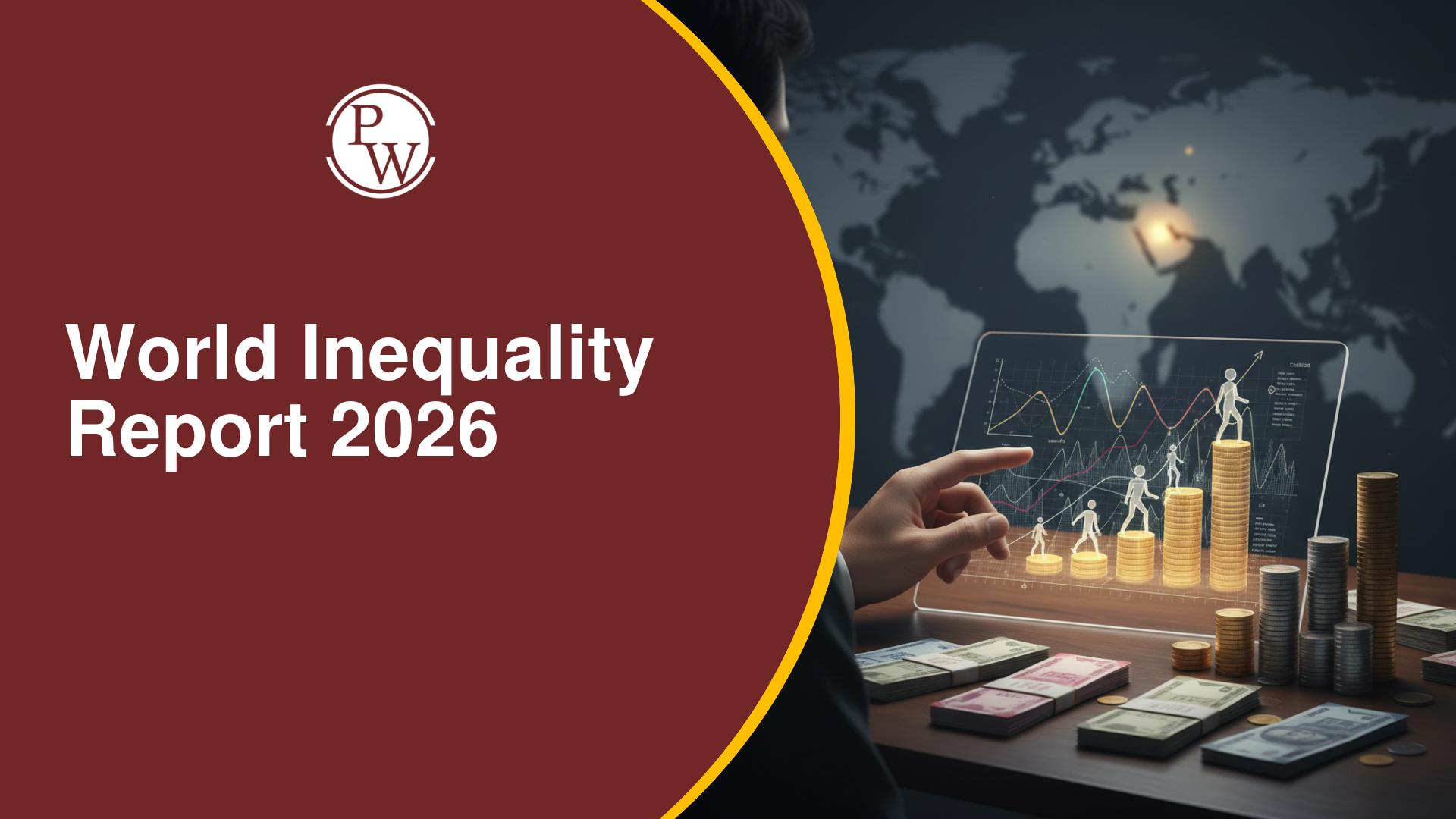
Economic growth and development are two important concepts that show the progress of a nation. Although the terms are mostly used together, but they mean two different things. Economic growth and development show how a country is doing. Understanding them helps us see how a country earns more money and makes life better for its people. Below, we will learn what economic growth and development are, how they are different, their features, how we measure them, what affects them, and how India is improving in these areas.
What is Economic Growth?
Economic growth refers to the increase in a country’s production of goods and services over time. It is usually measured by the rise in Gross Domestic Product (GDP) or per capita income. Economic growth is a quantitative measure, meaning it focuses on numbers and the total output of the economy rather than the quality of life.
Economic growth shows how much more the economy is producing and indicates the country’s ability to generate wealth. For instance, when factories produce more goods or technology improves productivity, economic growth occurs.
What is Economic Development?
Economic development is a bigger concept than economic growth. It not only considers the increase in income and production but also focuses on improvements in the living standards, education, healthcare, employment, and social welfare. Economic development focuses on qualitative changes that make life better for people.
For example, even if GDP increases, a country may not be considered developed if people still lack access to basic services, education, or healthcare. So, economic development looks at the overall well-being of society along with economic progress.
Features of Economic Growth
Economic growth has some features that help us understand its nature. Below, we’ve mentioned the features of economic growth:
| Features of Economic Growth | |
| Feature | Explanation |
| Increase in National and Per-Capita Income | Growth is measured by higher national income and per capita income. |
| Real Income Measurement | Focuses on real income, not just nominal increases due to inflation. |
| Sustained Over Time | Growth should continue consistently over the long term. |
| Productive Capacity | Growth relies on improvements in production, technology, and infrastructure. |
Features of Economic Development
Economic development involves a wider range of improvements in society. It focuses on both economic and social progress. Below, we’ve mentioned the features of economic development:
| Features of Economic Development | |
| Feature | Explanation |
| Comprehensive Improvement | Includes changes in income, savings, investment, and social structures. |
| Qualitative and Quantitative Changes | Focuses on better quality of life along with growth in income. |
| Equity and Welfare | Aims for fair income distribution and better social welfare. |
| Human Development | Includes improvements in education, healthcare, and skill development. |
Difference between Economic Growth and Economic Development
It is important to know the difference between economic growth and economic development because they are related to each other but not the same. Below, we’ve mentioned the difference between economic growth and economic development:
| Difference Between Economic Growth and Economic Development | ||
| Aspect | Economic Growth | Economic Development |
| Meaning | Increase in output of goods and services, measured by GDP or per capita income. | Broader improvements in social, cultural, and economic structures improve quality of life. |
| Factors | Focus on GDP components like consumption, investment, and government spending. | Focus on human capital growth, reduced inequality, and structural improvements. |
| Measurement | Measured through quantitative factors such as GDP growth. | Assessed through qualitative measures like HDI, poverty indices, and gender development index. |
| Effect | Leads to higher income and output. | Results in both qualitative and quantitative improvements in living standards. |
| Relevance | Shows economic performance and wealth creation. | Shows overall societal progress and inclusive development. |
Indicators of Growth vs Development
Indicators help to measure economic progress. Economic growth and development use different types of indicators.
| Indicators of Growth vs Development | ||
| Indicator Type | Economic Growth | Economic Development |
| GDP | Main measure of growth | Not sufficient alone for development |
| Per Capita Income | Indicates average income | Part of overall well-being |
| Industrial Output | Shows productivity | Shows structural transformation |
| Human Development Index (HDI) | Not used | Measures education, life expectancy, and the standard of living |
| Poverty & Inequality | Not directly measured | Important indicator for development |
| Access to Services | Less relevant | Measures the quality of healthcare, education, and basic services |
Factors Influencing Growth and Development
There are many factors that influence economic growth and development. These factors work together to determine a nation’s progress. Below, we’ve mentioned the factors influencing growth and development:
1. Economic Factors: Capital formation, investments, trade, FDI, and technological progress drive economic growth and development.
2. Human Capital: Education, skills, and health of the population play a crucial role in sustainable growth.
3. Governance and Institutions: Political stability, good governance, and strong institutions promote economic confidence and development.
4. Social and Environmental Factors: Access to education, healthcare, gender equality, social cohesion, and climate resilience influence inclusive growth and development.
Economic Growth and Development in India
India has experienced significant economic growth and development over the years. After independence, India focused on industrialisation and central planning. Initial challenges included low literacy, low per capita income, and reliance on agriculture.
The Green Revolution in the 1960s increased food production, while economic liberalisation in 1991 spurred growth and poverty reduction. Today, India is the fourth-largest economy, with a GDP of $4 trillion in 2025 and a per capita income of $2,880. Reforms like GST, "Make in India," and digital initiatives have driven growth, but challenges like unemployment, inequality, and poor infrastructure remain.
Despite economic growth, India still faces high poverty and regional disparities. Economic development requires not just growth but also improvement in living standards, education, healthcare, and job opportunities.
Initiative for Promoting Growth and Development
The Government of India has launched some initiatives to promote economic growth and development. Below, we’ve mentioned initiatives for promoting growth and development:
| Initiative for Promoting Growth and Development | |
| Initiative | Objective |
| Make in India | Promote India as a global manufacturing hub. |
| Atmanirbhar Bharat | Promote self-reliance and local manufacturing. |
| PM Gati Shakti National Master Plan | Improve infrastructure and connectivity. |
| National Logistics Policy | Reduce logistics costs and improve efficiency. |
| National Infrastructure Pipeline | Invest in roads, railways, ports, and airports. |
| FAME-India Scheme (Phase-II) | Promote electric vehicle adoption and manufacturing. |
| Digital India | Enhance internet connectivity and digital services. |
| Swachh Bharat Abhiyan | Improve cleanliness and sanitation nationwide. |
Economic growth and development are important for a nation’s progress. Economic growth focuses on increasing the country’s output and income, while economic development ensures that growth translates into better living standards, equity, and overall well-being. By understanding the difference between economic growth and economic development, policymakers can design strategies that promote both wealth creation and social welfare. India’s journey shows that rapid growth must be coupled with development initiatives to achieve inclusive and sustainable progress.
Ready to boost your UPSC 2026 preparation? Join PW's UPSC online courses today!
Economic Growth and Development FAQs
What is economic growth?
What is economic development?
How is economic growth different from economic development?
What are the main indicators of economic development?






